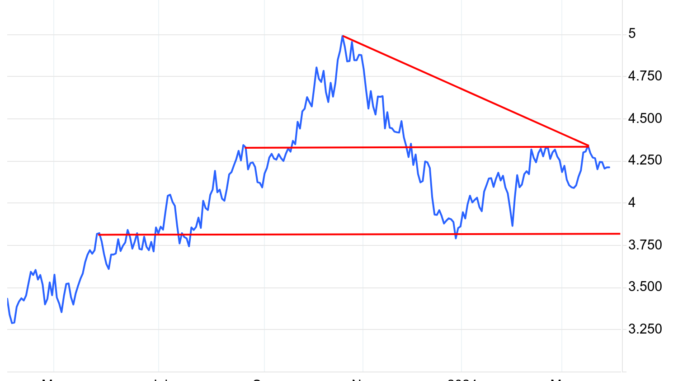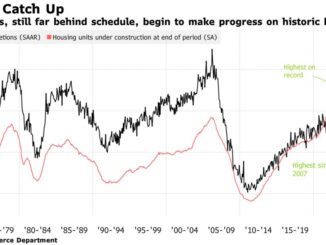As inventory and demand grow year over year, the price-cut percentage data increases year over year. So, we will keep tracking this data line to see how high it goes this year. We keep it simple: higher inventory softness in demand means price growth is weakening. As we can see below, the year-over-year data is showing a higher percentage of price cuts.
10-year yield and mortgage rates
For those of you who have followed me for the last 12 months, you know how important the 4.34% level on the 10-year yield is for my economic work and therefore for the mortgage rate discussion. A break above this level would send mortgage rates toward 7.5%-8%. So far, so good here.
We had the PCE inflation report come out Friday and because some people were expecting a hotter number than estimates, it was perceived to be bullish for rate cuts. However, the markets were closed Friday, so we have to wait and see how trading goes on Monday. The 10-year yield channel is between 4.25%-3.80%, which looks correct as long as the economic data stays firm and jobless claims don’t break higher. This means mortgage rates will likely remain in the upper range of my 2024 forecast of 6.75%-7.25%.
There was not too much action in mortgage rates last week, but with jobs week coming up, we could see some movement. As you can see below, the 10-year yield has made a massive move from 2022 and has stayed above 4%, even with the progress we have made with inflation. Always remember, when it comes to discussions about rates and the Fed pivoting, it’s always labor over inflation data.
Purchase application data
Purchase application data didn’t move much last week. It was flat on a week-to-week basis and down 15% year over year.
Since November 2023, after making holiday adjustments, we have had 10 positive and six negative purchase application prints and one flat print. Year to date, we have had four positive prints versus six negative prints and one flat print.
What have 2022, 2023, and 2024 shown us? Purchase apps made a solid positive run up until mortgage rates started to get back over 7%. This was similar to 2023 data, when purchase apps had 12 weeks of a positive run-up until rates moved toward 7% and then 8%.
Week ahead: We’ll see trading off the inflation report and it’s jobs week
First, the trading on Monday will be exciting because of the PCE inflation report; some argue it was hot and some say it wasn’t. The market decides this, and bond trading will judge it on Monday morning.
Also, Federal Reserve Chairman Powell talked on Friday. I believe Powell’s crucial comment was that the Fed won’t overreact to significant disinflation or heated inflation reports. I think some people missed this. If you want to understand why the markets still have three rate cuts priced in, it’s this mindset.
Then it’s jobs week, with four labor reports, and, of course, for me, it’s labor over inflation data, so buckle up!
Want more context? On the PowerHouse podcast with HousingWire CEO Clayton Collins, I discussed why the data lines we look at in the Housing Market Tracker are so critical for those in the housing industry.
ENB
Sandstone Group




